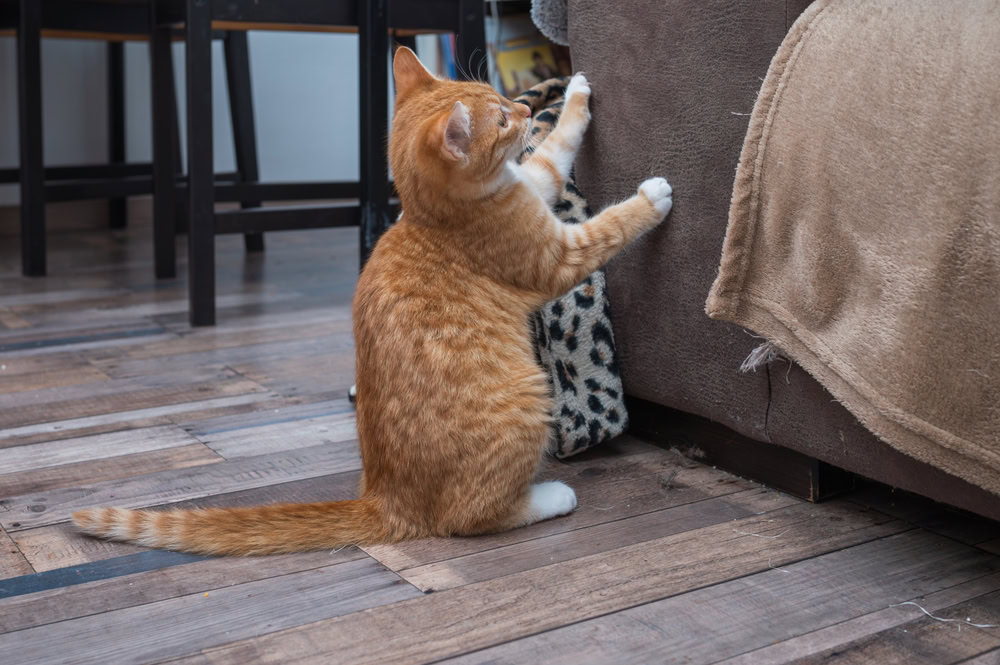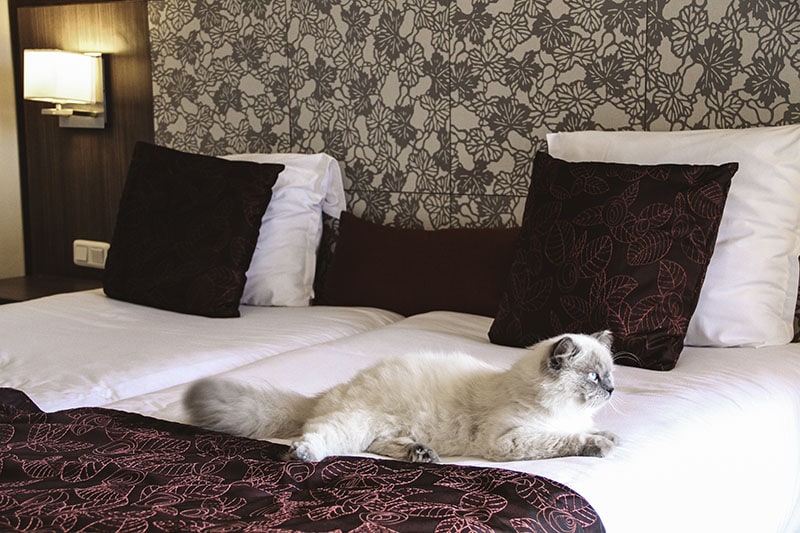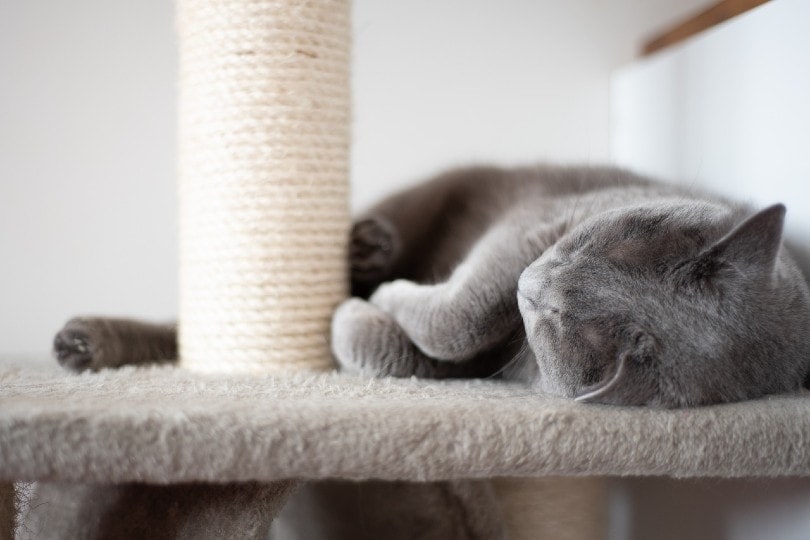VET APPROVED

The information is current and up-to-date in accordance with the latest veterinarian research.
Learn more »Click to Skip Ahead
If you’ve set your mind to owning a feline pet, scratching is a normal behavior that you should expect. All cats, whether wild or domestic, have a need to scratch to communicate and to sharpen their claws. This means they will use the scratcher, but they might also scratch on furniture.
With this in mind, the best thing you can do is provide an appropriate alternative for your cat to scratch as a way of deterring them from ruining furniture, walls, or drapes.
Keep reading to learn why cats scratch and how to redirect the scratching.

Why Do Cats Scratch Furniture?
For cats, scratching is an instinctual behavior, and there are several reasons why your pet scratches your furniture and any other surface it may get its paws on. While we may see misbehavior or naughtiness, cats are simply displaying normal, natural behaviors to meet their needs.
While all cats scratch, some breeds or individual cats might be more relaxed and passive, so they won’t require a lot of deterring from ruining your furniture. Those that do are subject to a lack of a better alternative and will resort to destructive scratching 1, whether on furnishings, carpets, walls, or door posts.
But while scratching provides physical, social, and emotional stability for your kitty, the main reasons why cats scratch include the following:
1. To Mark Their Territory
Cats are territorial mammals regardless of their age, breed, or gender, and scratching is a way of staking their claim on areas or items around the house. Your cat will let its counterparts know of its presence around your furniture by leaving claw marks and pheromones from scent glands located between its toes.
You’ll find that felines surrounded by other pets are more inclined to leave these signals around their favorite places. A designated scratcher is necessary for such purposes, especially if your cat is prone to marking household items.
2. To Stretch Before or After Relaxation
There’s no doubt that cats love a good stretch. The motion of scratching allows your cat to exercise and stretch the muscles on the forelimbs and the spine using their weight as resistance, and thereby scratching whatever is nearby.
Cats love to laze around and sleep mostly in the daylight hours, and they’ll stretch and scratch before and after this activity. As such, your indoor cat that doesn’t venture outside is more prone to scratching the piece of furniture they prefer sleeping on.
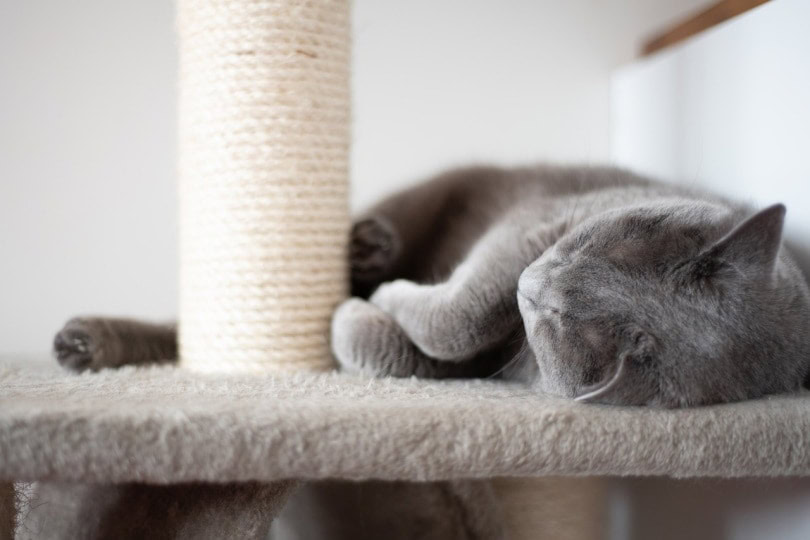
3. To Maintain Their Claws
One of the few ways that your cat keeps their claws healthy is by scratching, which sharpens their claws and releases the claw sheath, or outer layer, to make new growth possible. Similar to your fingernail, a cat’s claw is made of keratin, but unlike in humans, it’s composed of several layers.
When your cat scratches, the older layers peel off to reveal newer claws underneath, which are much sharper to help with catching and killing prey while hunting and climbing. Cats that regularly scratch don’t require constant claw clipping, so it makes sense to encourage this behavior constructively with scratching posts.
Keeping your cat's nails trimmed can help you avoid many common paw problems. We like Hepper's Cat Nail Clipper Set because it has it all: two sizes of well-designed clippers, a nail file, and a handy carrying pouch. The clippers have built-in safety guards and locking switches, and the blades are made of sturdy, easy-to-clean stainless steel.
At PangoVet, we've admired Hepper for many years, and decided to take a controlling ownership interest so that we could benefit from the outstanding designs of this cool cat company!
4. Entertainment and Play
Scratching isn’t just a necessity for cats, but it’s also an enjoyable and stimulating activity. Many cats scratch as a form of play, especially when they are feeling energetic or excited. The physical action of digging their claws into a surface, coupled with the satisfying texture and resistance, provides mental and physical enrichment.
You may notice your cat scratching more during play sessions, after a burst of zoomies, or when engaging with interactive toys. Some cats also scratch as a way to release pent-up energy or frustration. Providing designated scratching posts, cat trees, or interactive scratching toys can help satisfy this instinct while keeping your furniture safe.
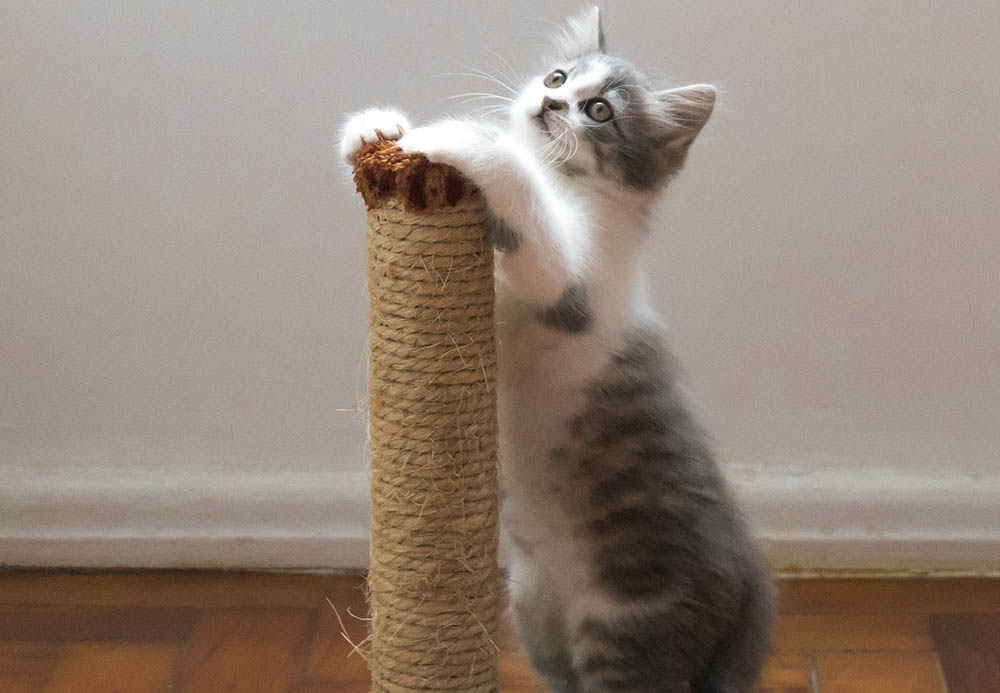

How Do You Keep Your Cat From Scratching Furniture?
You must realize the reasons your cat is scratching furniture in the first place before looking for solutions to this behavior. You won’t find a furry pet that’s destroying your favorite couch out of malice, as it’s an ingrained instinct in all felines.
Instead of trying to stop your cat from scratching, offer them an alternative in the form of what or where to scratch. You can provide cat-appropriate objects that are more attractive to scratch than furniture on which they can direct this urge.
The Hepper Hi-Lo Cat Scratcher features a modern and clever design that offers cats an appealing place to scratch – and a way to keep them from scratching all the things they shouldn't. Unlike most cat toys (where your cat probably just prefers the cardboard box they came in), cat's flock to this design ... maybe it's because there's cardboard in it!
- Premium Materials - Hepper's cardboard scratcher is made with dense, B-flute cardboard, and a metal...
- High, Low and Lower - A single cat scratch pad won't keep your cat engaged. 3 unique positions keeps...
- Activates Muscles - The Hi Lo isn't just a cat nail file to stop the chief cat couch scratcher. The...
With its 3-position setup, textured cardboard, and sturdy frame, it encourages their natural scratching behavior, steering them away from clawing at items like furniture, walls, carpets, curtains, and people. The Hi-Lo is a reliable solution to safeguard your home and create a more enjoyable environment for your cat, all while looking modern and stylish.
At PangoVet, we've admired Hepper for many years, and decided to take a controlling ownership interest so that we could benefit from the outstanding designs of this cool cat company!
- Providing scratching posts made of chenille fabric, carpeting, cardboard, or rope. Your cat may prefer a vertical, horizontal, or slanted post with grain for picking or raking, and it could be ground level or placed higher up.
- Place the scratching posts in the right location. If you want to encourage the use of scratching posts, these should be located in areas where your cat likes to be, and ideally close to the furniture they scratch to redirect their behavior. Remember to reward them every time they show interest in it or when they use it.
- Cover the furniture pieces or places you don’t want them to scratch. Use double-sided tape, aluminum foil, or vinyl lining to make it unappealing.
While all these procedures will work to a certain degree in deterring your cat from scratching furniture, investing in toys may help if your cat’s behavior is borne out of boredom or gameplay. Keep these playthings next to pieces of furniture that your feline pet has a habit of scratching on to capture their attention.
Also, it helps to commit to spending some quality time with your cat, as they may be scratching furniture as a way of seeking attention. Plan at least 2–3 moments during the day, one before bedtime, to play with your pet and cuddle to communicate your love and care.
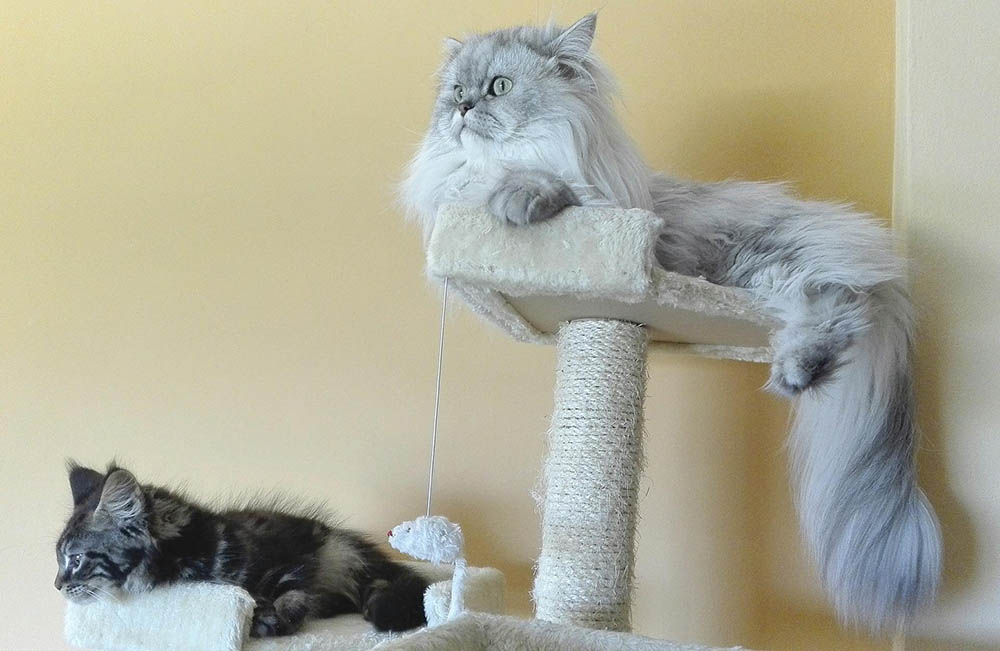
What Not to Do While Discouraging Your Cat From Scratching Furniture
Avoid punishing your cat for scratching furniture, as their psyche won’t connect their action with whatever consequence you’re imposing. When you’ve introduced scratching posts as an alternative to furniture for your cat, don’t force them to dig their claws in, as they may get frightened and avoid them completely.
Declawing, while popular in the past, is highly discouraged as it involves an unnecessary amputation of the last phalanx of your cat’s toes. You can, of course, clip your cat’s claws so they are not as sharp; this won’t stop your cat from walking, climbing, or playing.
When your cat scratching posts have been thoroughly scratched and appear unsightly, avoid throwing them away, as felines prefer torn and shredded objects. That’s because other than the pheromone scent they’ve left behind on well-scratched posts, they can get their claws better into the material, and it looks familiar.

Final Word
Scratching is normal for a cat, and while not all cats scratch furniture, they’ll display it at any time for several reasons, so there’s no point trying to get rid of this behavior. It’s an instinctive and normal way of showing emotion, such as stress or excitement, marking their territory while giving themselves a manicure.
You may, however, offer alternatives to furniture for your feline pet to scratch. Offer them toys and affirm your companionship by spending quality time together.
- aspca.org/pet-care/cat-care/common-cat-behavior-issues/destructive-scratching
- https://vcahospitals.com/know-your-pet/scratching-behavior-in-cats
- https://www.petmd.com/cat/training/evr_ct_how-to-keep-a-cat-from-scratching-furniture
- https://www.msn.com/en-us/news/technology/how-to-stop-cats-scratching-furniture/ar-AAW2ulY
- https://www.humanesociety.org/resources/10-tips-keep-your-cat-happy-indoors
Featured Image Credit: Ronald Rampsch, Shutterstock
